How to brew Kenyan coffee, how to brew Kenyan coffee beans correctly
When it comes to African coffee, what people think of is Ethiopia, which is famous all over the world for its charming acidity and aroma, but there is also a more representative one is Kenyan coffee. Ethiopian coffee has a lighter flavor, brighter taste, floral and fruit acidity, while Kenyan coffee is more sour and floral than Ethiopian coffee, but it is more acidic. For example, Ethiopia is citric acid, while Kenya is full-bodied with small tomatoes. Essel's beans have always been the most popular in the front street, especially the washed Yega Chuefei coffee, and some people are loyal to the rich taste of Kenyan coffee's little tomatoes.
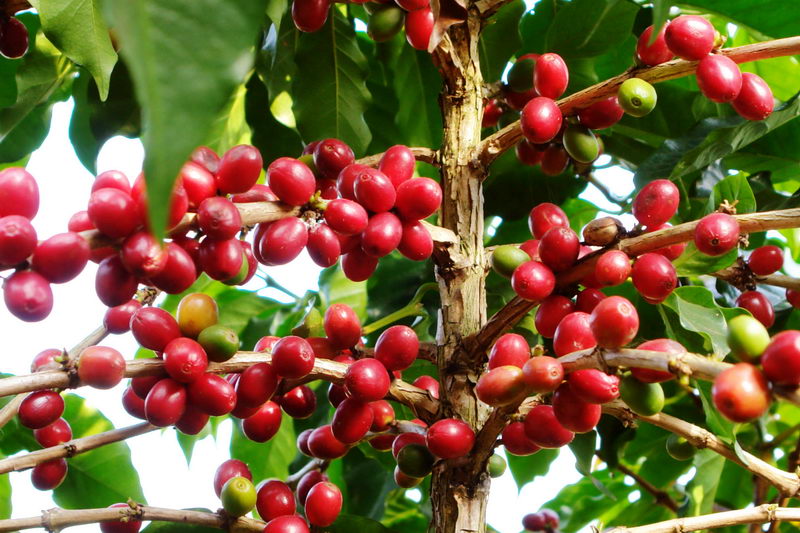
Kenyan Coffee growing Environment when someone first starts drinking Kenyan coffee, it suddenly strikes out. What kind of coffee is this? Why is it so sour? For those who like to eat fruit, it is not difficult to guess the taste of virgin fruit, and some people think it is the taste of tomato juice. In fact, Qianjie believes that these tastes are correct, because everyone's sense of taste is different. The taste of coffee beans is naturally inseparable from their growing environment. The flavor of coffee varies from region to region, not to mention the flavor of coffee from different countries.
Kenya is located in eastern Africa, the equator runs through the central part, and the Great Rift Valley of East Africa runs through the north and south. It is bordered by Somalia to the east, Tanzania to the south, Uganda to the west, Ethiopia and South Sudan to the north, and the Indian Ocean to the southeast. In Kenya, except for the coastal part of the plain, most of the rest of the country is a plateau with an average elevation of 1500 meters. The capital Nairobi has a mild climate, with an average annual temperature of 17.7C and an annual rainfall of 1049 mm. Due to the low temperature and slow growth in the mountain area, the aroma components of coffee beans have been fully developed, the sour taste is more obvious, and the texture is harder. This fertile moonbend-shaped coffee area is the main producer of Kenyan boutique beans. The coffee harvest is also divided into two periods with the rainy season, with 60% concentrated from October to December and another 40% from June to August. The rest is in the dry season. The annual rainfall decreases from 1500 mm to 200mm from southwest to northeast.
Main coffee producing areas in Kenya
Kenyan coffee is mainly grown in volcanic lands around the capital Narobi to the Kenyan mountains at an altitude of 1600-2100 meters. The main coffee producing areas in Kenya are six major producing areas, including: Thika, Kirinyaga, and the western side of Mount Kenya (Mt. Kenya West, Nyeri, Kiambu, Muranga. The Kenyan coffee beans on the front street store list are from the Thika producing area.

Sika producing areas are planted between 1550 and 1750 meters above sea level. Sika is a small town in Nairobi, the capital of Kenya. There are many coffee fields around Nairobi, and Sika is an industrial town, but surrounded by agriculture and waterfalls. There are about 2000 farmers in Sika. Qianjie determined by cup test that the flavor of the producing area has bright acidity, thick berry juice and honey-like sweetness.
Kenyan coffee varieties
The variety of Kenyan coffee is different from the usual coffee variety logo, which is not commonly known: iron pickup, Rosa, Yellow bourbon, Kaddura, Kaduai, Pacas and so on. But: SL28, SL34, Batian, Ruiru11. Among them, the most famous coffee beans in Kenya are SL28 and SL34. The Kenyan Asaria Coffee from Qianjie Coffee is the SL28 and SL34 varieties.
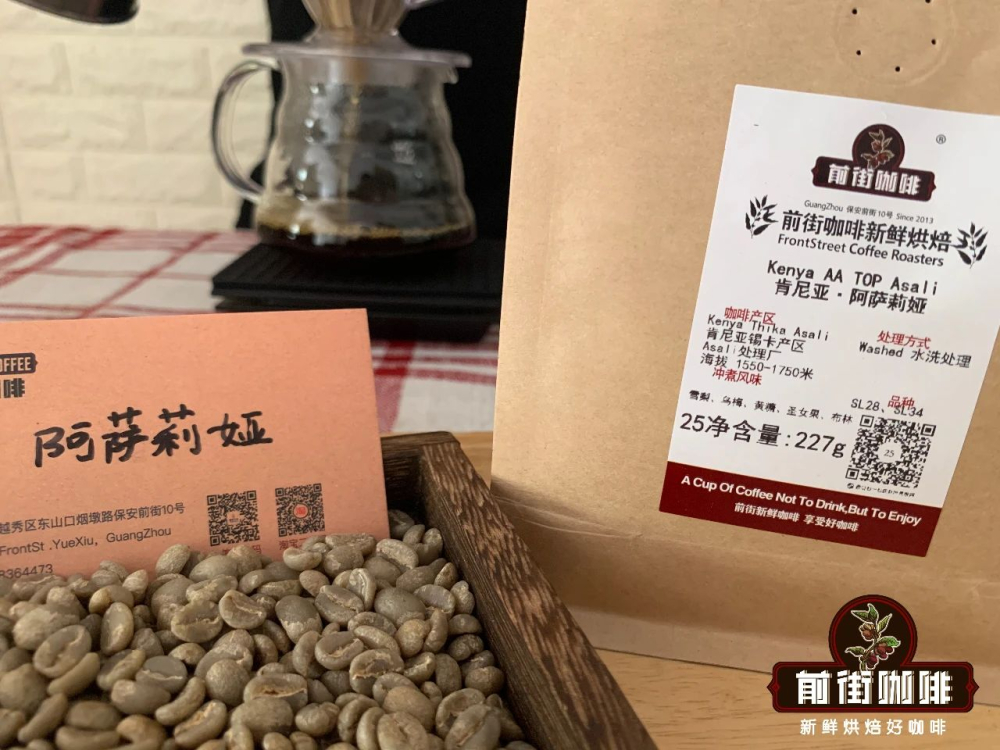
The full name of SL is "Scott Laboratories", which is translated into Chinese as "Scott Lab". The institute, established in Kenya, is a research institute for the study of coffee varieties. Between 1934 and 1963, Scott Lab developed a number of varieties. Scott Lab has developed a variety of SL varieties, mainly based on mocha and bourbon varieties grown in Kenya. Forty-two varieties from different producing areas were selected in the laboratory, and their yield, quality, drought resistance and disease resistance were studied. After numbering and screening one by one, SL-28 and SL-34 were finally obtained. SL28-SL34 was first established in the 1930s by the newly established Scott Labs commissioned by the Kenyan government to select the varieties suitable for the country. 42 primary varieties were numbered and screened one by one, and finally got SL-28 and SL-34, the former originated from Bourbon and SL-34 from the tin truck, the two are not a series of varieties.
[SL28] after breeding from Tanganyika D.R in 1931, SL28 has spread all over Kenya, and its cup test score shows that it has a good flavor. The leaves of the SL coffee tree are wide and the top is bronze. The bean shape is short and round, the bean body is thick, and it has the flavor characteristics of rising acidity and obvious sweetness. Some sources claim that the Scott Laboratory obtained the variety SL 28 by using a hybrid breeding of French missionary Bourbon, Mocha and Yemeni Tieka varieties. SL28 has good flavor, good drought resistance, tolerance to drought, diseases and insect pests, so it is suitable for planting in middle and high altitude areas, but it is vulnerable to common diseases.
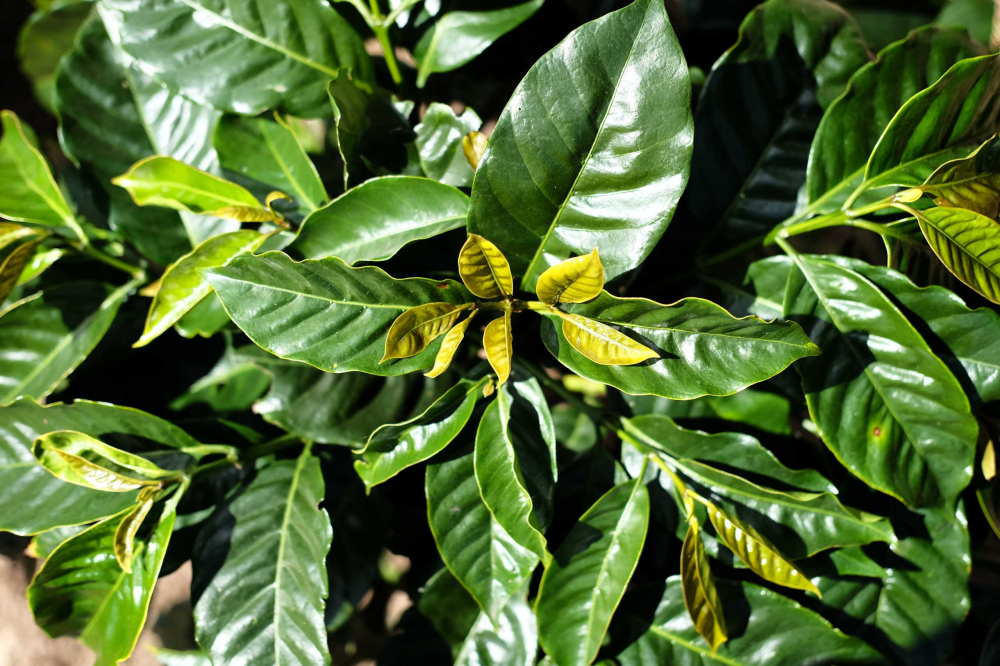
[SL34] SL34 is a mutant of the French missionary Bourbon, which originated from the Loresho plantation in Cabette. The cotyledons of the SL34 coffee tree are broad in shape and dark brown at the tip. SL34 is suitable for growing at high altitudes with good rainfall, but it is also vulnerable to a variety of common coffee diseases.
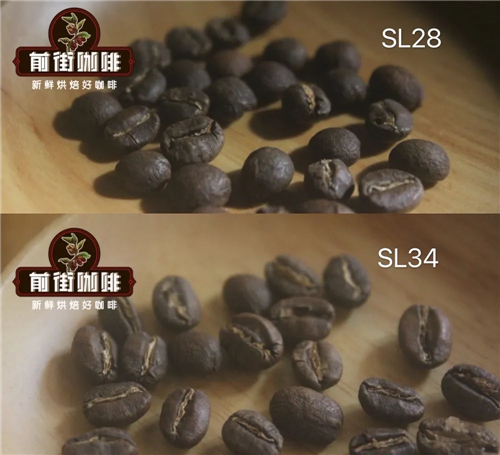
The flavor of SL28 is similar to that of SL34, but SL34 has richer acidity and more full-bodied taste. However, both varieties have a unique Kenyan flavor with rich acidity and a well-balanced taste. Kenya coffee beans 72-hour washing method Coffee beans are treated differently and their flavors are also very different. For example, the wet bubble method of Mantenin in Indonesia, the whisky barrel treatment of Honduras and so on, among which Kenyan coffee is famous for its special washing treatment. According to Qianjie Coffee, unlike the water washing treatment of neighboring Ethiopia, the Kenyan water washing method is a cyclic repeated treatment after fermentation.
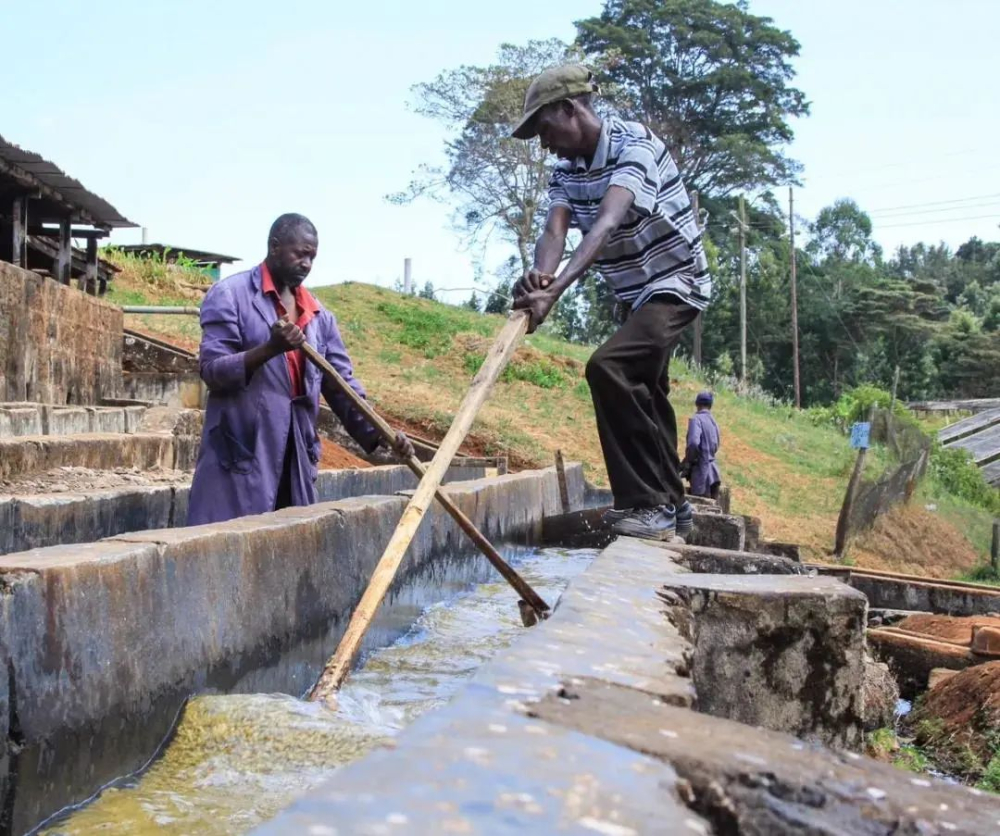
After receiving the high-quality ripe coffee cherries on the same day, peel and beat immediately and ferment in the fermentation tank for 24 hours. Wash with plenty of clean river water immediately after the end of the first 24 hours. Then, ferment again with clean river water for 24 hours. After the second 24 hours, repeat the previous step to 72 hours. Because the whole washing process takes 72 hours, it is called Kenyan 72-hour fermentation washing treatment, or K72 for short. This treatment allows coffee beans to ferment for a long time at low temperature, so that beans can have a brighter, cleaner but full flavor! The Kenyan coffee beans of Qianjie Coffee are treated with K72 water washing.
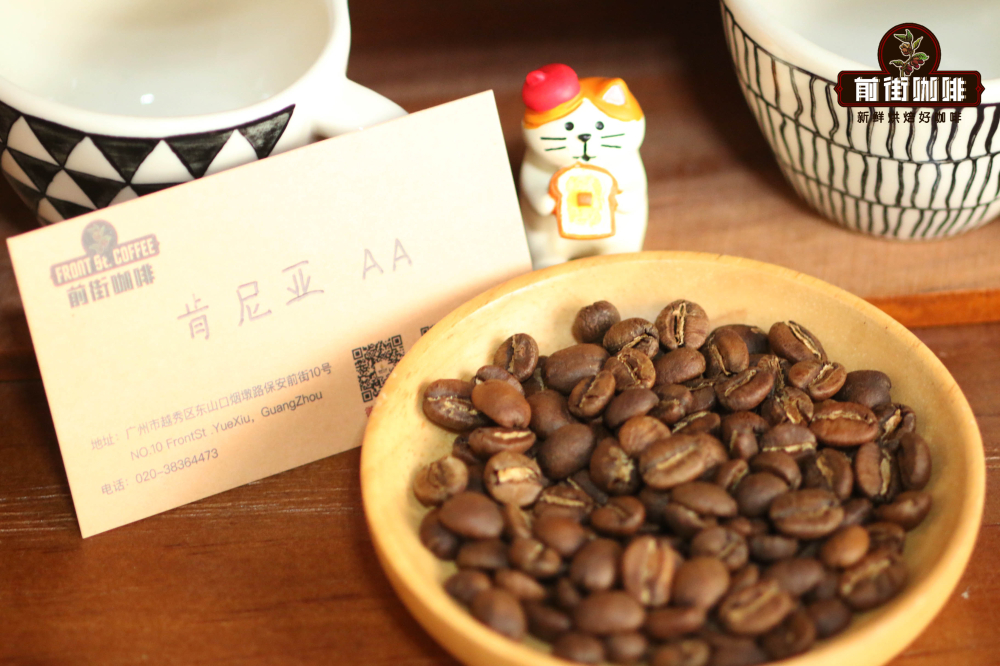
How can Kenyan coffee beans be cooked to taste better?
Generally speaking, all coffee beans can be brewed by hand, but it is not the best way to reflect the flavor of coffee. For example, Brazilian coffee beans taste better than hand-brewed coffee. As Qianjie just introduced, most high-quality Kenyan coffee has obvious acidity, melodious berry flavor and rising acidity. Kenya is very suitable for lovers who like coffee with acidity. Therefore, Qianjie recommends Kenyan coffee to make iced coffee, such as ice hand coffee, ice drop coffee, cold extract coffee and so on.
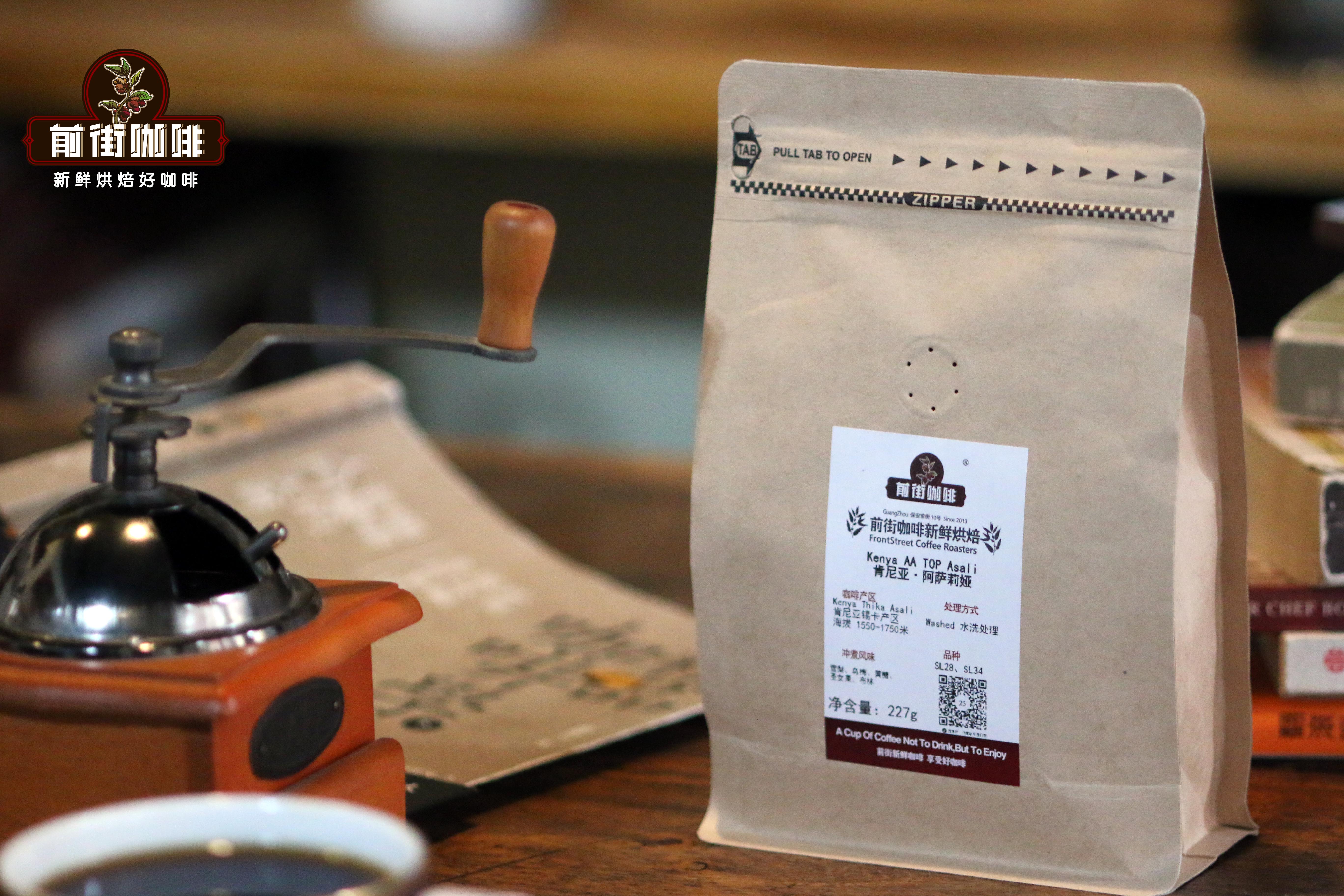
Qianjie hand-made Kenyan coffee parameters:
The specific cooking parameters used in Qianjie are: V60 filter cup, water temperature 90 ℃, water powder ratio 1:15, powder quantity 15g, medium fine grinding degree (China 20 standard screen pass rate 80%)
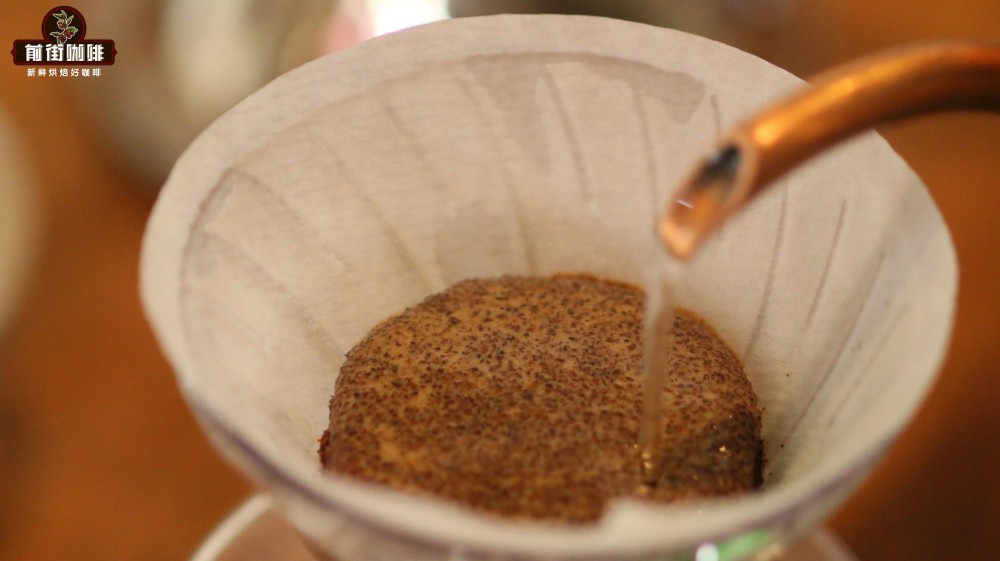
The front street adopts the method of three-stage water injection: steaming with 30 grams of water for 30 seconds, injecting water around the second stage to 125 grams, and waiting for the water level to drop to 225 grams after the powder bed is about to be exposed. Remove the filter cup when the coffee liquid fully flows into the sharing pot, and the extraction time is 2 minutes.
Azaria coffee bean flavor: wet aroma with ripe tomato and flower aromas, imported virgin fruit and black plum flavor, bright acidity, clean and rich taste, outstanding middle sweetness, juicy, raspberry and yellow sugar on the finish, and green tea aroma.
How do you make coffee with ice hands?
Qianjie coffee ice hand brewing coffee idea: extract a low proportion of coffee liquid (high concentration) diluted with ice.
The amount of coffee powder is 15 powder, the ratio of powder to water is 1:10, the water temperature is 90 degrees Celsius, and the grinding degree is medium thickness (0.85mm screen pass rate 80%). After the coffee liquid is extracted, another sharing pot needs to be pre-cooled with ice cubes, remove the old ice cubes and reload 100 grams of ice cubes. The purpose of pre-cooling is to prevent the ice from dissolving too quickly, causing the coffee to be over-diluted.

Then pour the extracted coffee liquid into the ice and shake and mix. The lid of the sharing pot can reduce the volatilization of aroma molecules on the one hand and pour out the coffee liquid without ice on the other hand. Ice hand coffee because it is a low proportion of extracted coffee liquid diluted with ice, so at the beginning will be a relatively rich coffee liquid, the taste will be full and solid, with the dissolution and dilution of the ice, the taste will tend to be smooth and smooth, and the flavor will change from complex to refreshing.
How do you make iced coffee?
The ice drop scheme in front street is to use 60 grams of coffee powder and extract 600 milliliters of coffee liquid. The ratio of powder to liquid is 1:10. The flow rate of water droplets is about 3 drops in 10 seconds, and the ice-water mixture is used as the water source of the pot. The extraction time is about 8 hours. After extraction, put the coffee liquid into a sealed bottle and put it in the refrigerator for 48 hours.
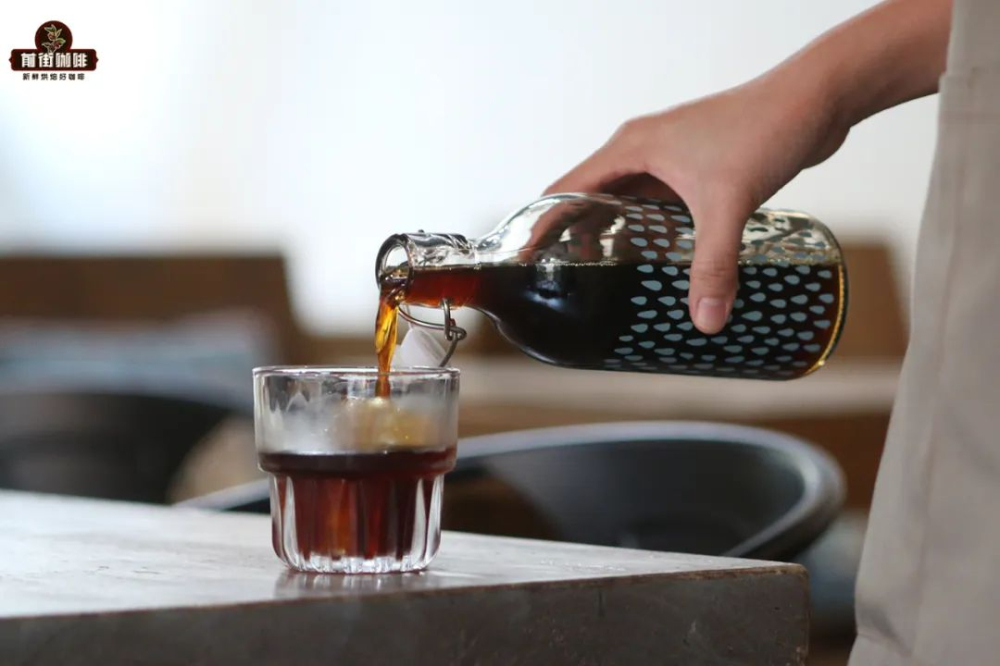
How do you make cold coffee?
Qianjie cold extraction solution is to use 50g coffee powder, reducing powder ratio at 1:10, so add 400ml of cold water and 200g of hard ice (a total of 600g ice-water mixture, the water absorption of coffee powder is twice as high as itself). Stir well, seal and store in refrigerator for 24 hours. Then take out and filter the coffee grounds with filter paper, then use a clean sealed bottle to seal the coffee liquid in the refrigerator for 32 hours.
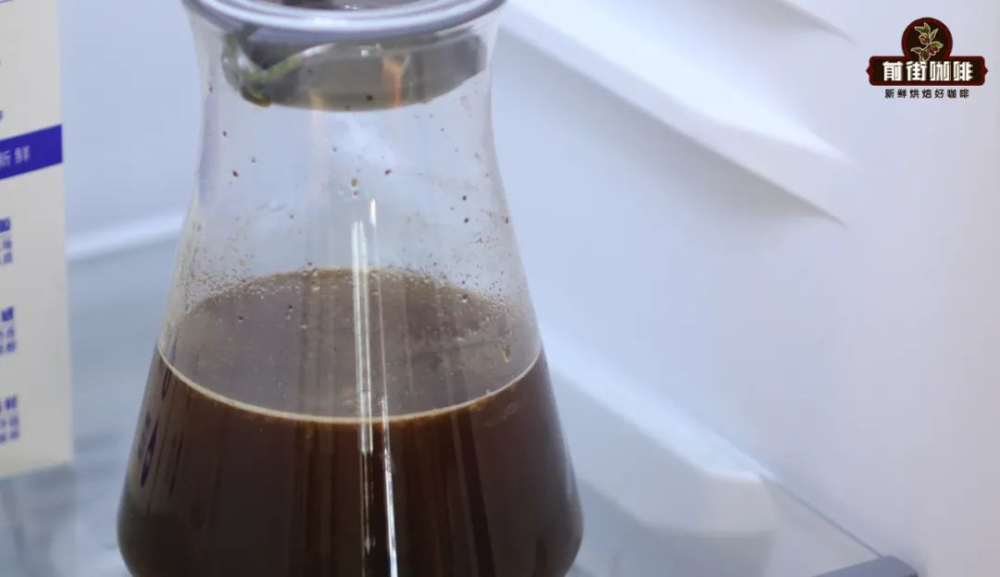
Qianjie coffee brewing suggestion:
No matter what kind of coffee is brewed, it needs to be fresh. Qianjie has always believed that the freshness of coffee beans has a great relationship with the flavor of coffee, so the coffee beans shipped in Qianjie coffee are roasted within 5 days. The purpose of Qianjie roasting is "freshly roasted coffee", so that every guest who places an order is the freshest coffee when he receives it. The bean cultivation period of coffee is about 4-7 days, so when the guest gets it, it is the time when the flavor is the best.
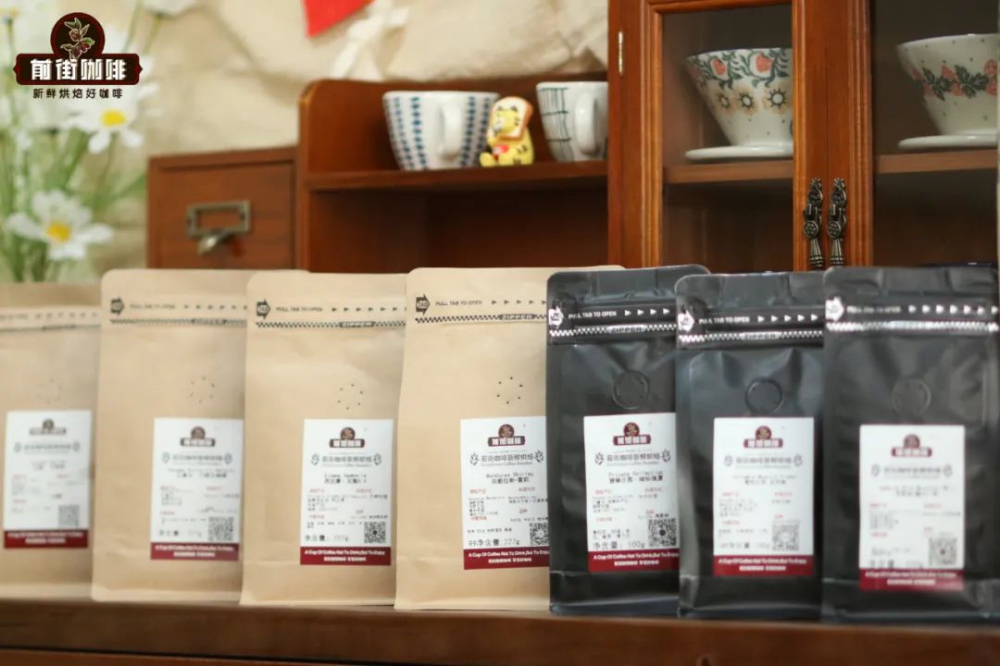
For those who need to be ground, Qianjie warmly reminds you that if the coffee beans are ground in advance, there is no need to raise the beans, because in the process of transportation, the pressure caused by carbon dioxide in the package can also make the coffee flavor round. so you can drink a cup of coffee as soon as you receive the coffee powder. But the coffee powder needs to be brewed in time, because the coffee powder oxidizes more quickly after contact with the air, that is to say, the flavor of the coffee will dissipate more quickly, and the flavor of the coffee is not so good. Therefore, Qianjie suggests buying whole beans, grinding and flushing now, so that we can better taste the flavor of coffee.
Professional coffee knowledge exchange more coffee bean information please follow the coffee workshop (Wechat official account cafe_style)
For more boutique coffee beans, please add private Qianjie coffee on Wechat. WeChat account: qjcoffeex
Important Notice :
前街咖啡 FrontStreet Coffee has moved to new addredd:
FrontStreet Coffee Address: 315,Donghua East Road,GuangZhou
Tel:020 38364473
- Prev
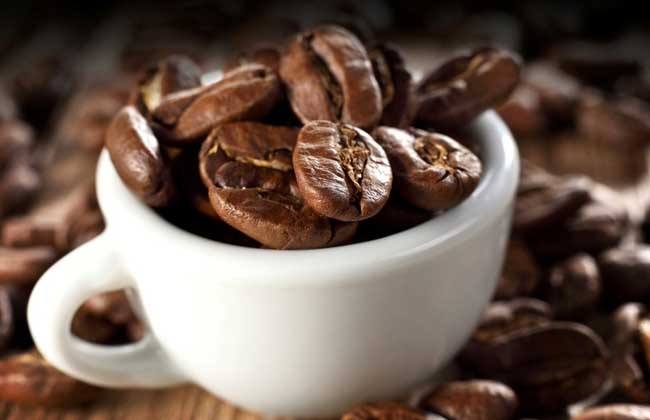
How about Kenyan coffee beans? recommended by coffee bean brands.
Following caf é (Wechat official account vdailycom) found that Cafe Beautiful opened a small shop of its own. Coffee industry insiders all think that Kenyan coffee is one of its favorite products, because Kenyan coffee contains every feeling we want from a good cup of coffee. It has wonderful and satisfying aromas, balanced and delicious acidity, well-proportioned particles and
- Next

Benji Maggie Coffee Bean introduction, Benji Maggie Coffee Bean flavor
Follower Cafe (Wechat public account vdailycom) found that the Beautiful Cafe opened its own shop, Bench Maji, in southwestern Ethiopia, not far from neighboring Sudan. Search on Google map and it's easy to find. Although the flavor of Banchi Magi Gesha Estate is different from that of Geisha in Panama, it is still worth tasting.
Related
- Detailed explanation of Jadeite planting Land in Panamanian Jadeite Manor introduction to the grading system of Jadeite competitive bidding, Red bid, Green bid and Rose Summer
- Story of Coffee planting in Brenka region of Costa Rica Stonehenge Manor anaerobic heavy honey treatment of flavor mouth
- What's on the barrel of Blue Mountain Coffee beans?
- Can American coffee also pull flowers? How to use hot American style to pull out a good-looking pattern?
- Can you make a cold extract with coffee beans? What is the right proportion for cold-extracted coffee formula?
- Indonesian PWN Gold Mandrine Coffee Origin Features Flavor How to Chong? Mandolin coffee is American.
- A brief introduction to the flavor characteristics of Brazilian yellow bourbon coffee beans
- What is the effect of different water quality on the flavor of cold-extracted coffee? What kind of water is best for brewing coffee?
- Why do you think of Rose Summer whenever you mention Panamanian coffee?
- Introduction to the characteristics of authentic blue mountain coffee bean producing areas? What is the CIB Coffee Authority in Jamaica?

